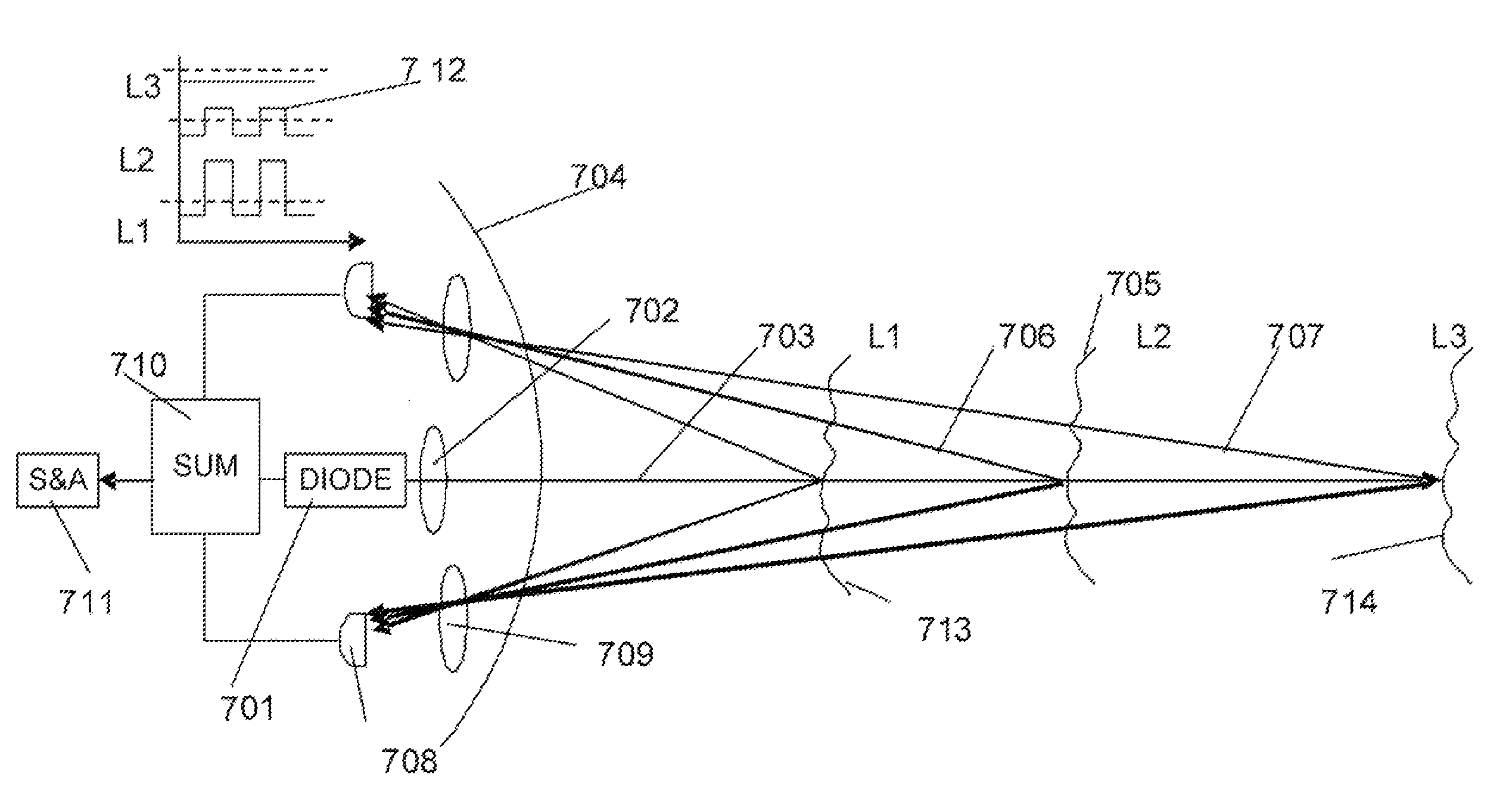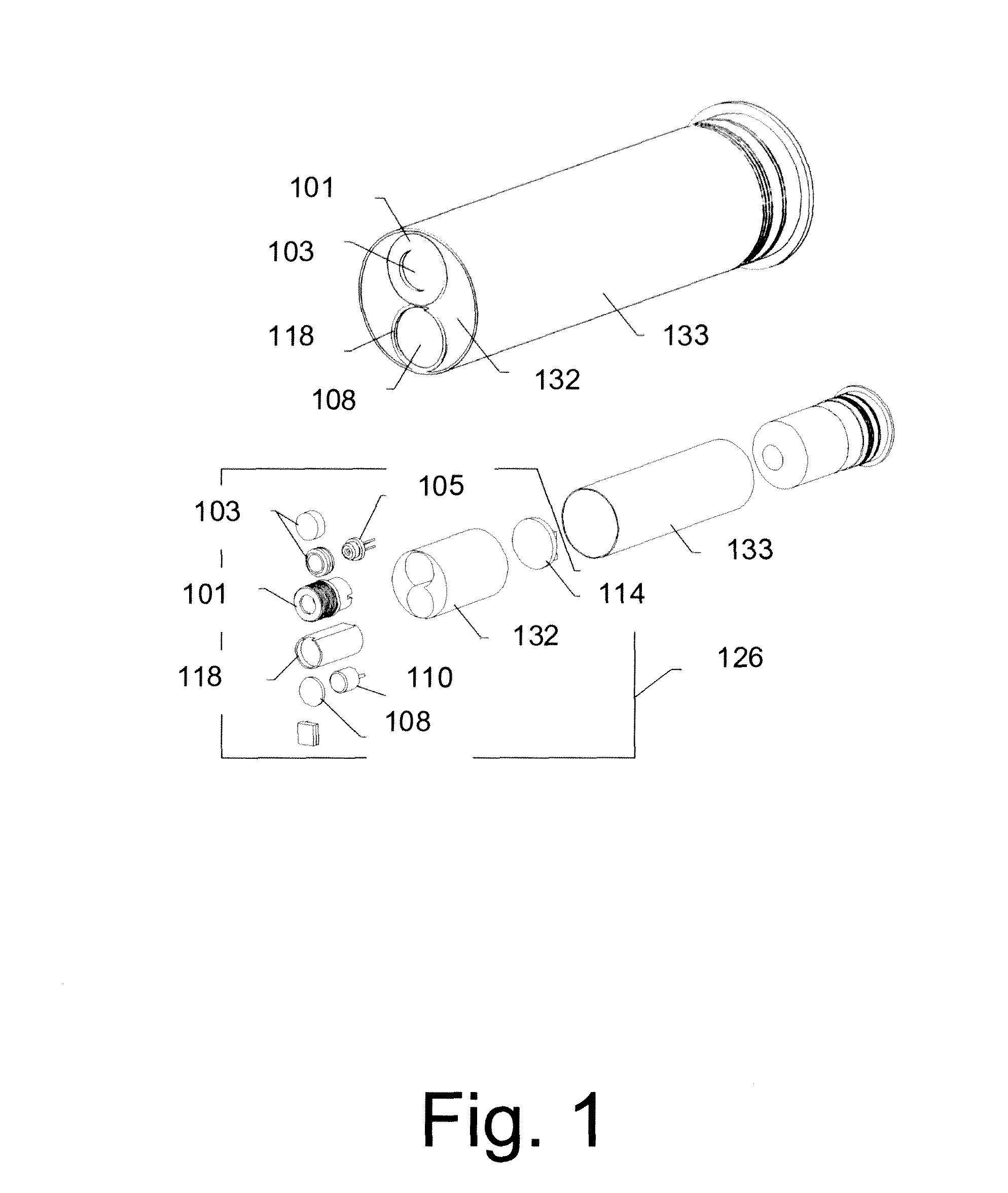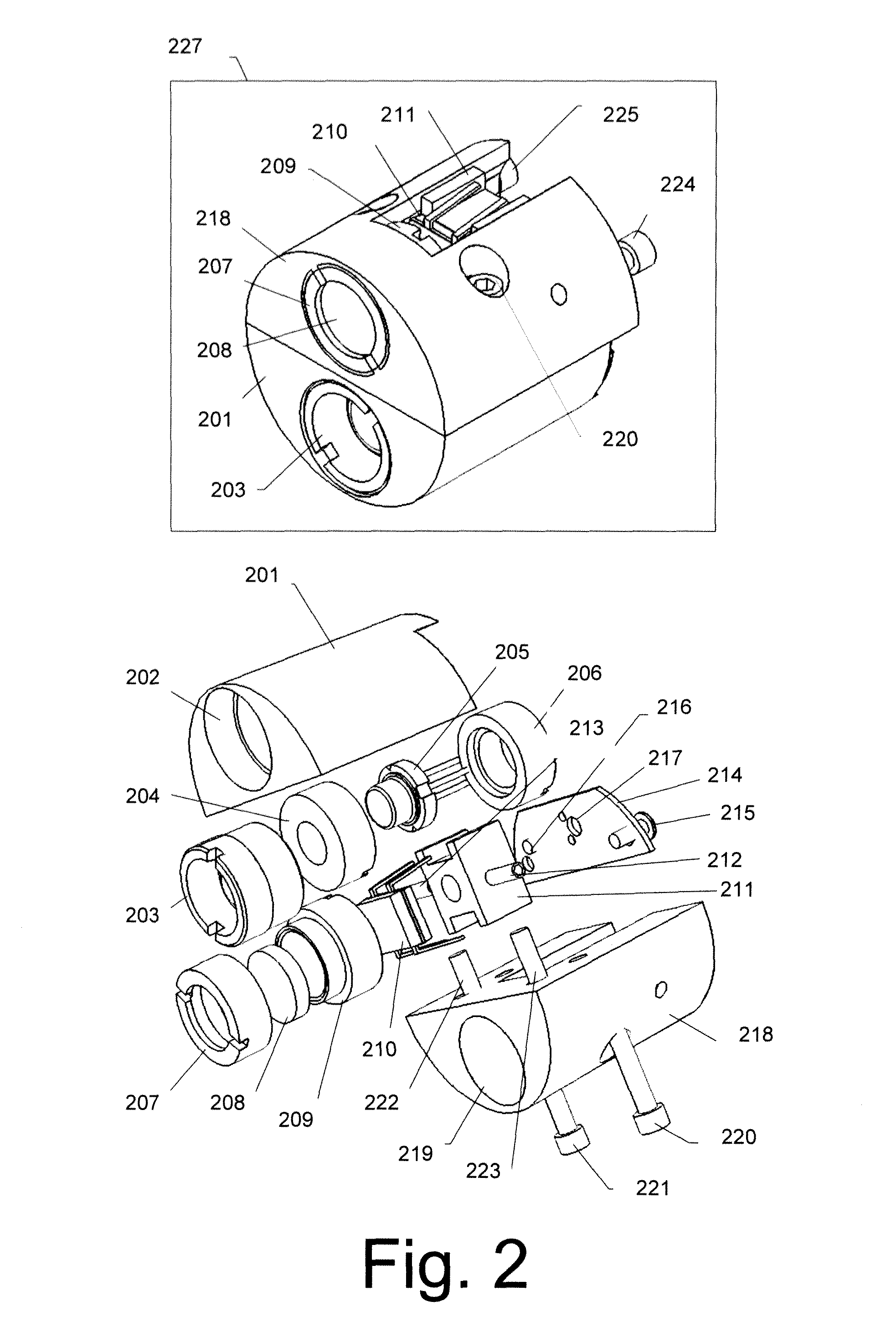Optical impact control system
a control system and optical technology, applied in the direction of orthogonal multiplex, lighting and heating apparatus, instruments, etc., can solve the problems of limited performance range of non-lethal weapon systems, insufficient short distances for proper protection of law enforcement, and the effect of preventing the effect of countermeasures
- Summary
- Abstract
- Description
- Claims
- Application Information
AI Technical Summary
Benefits of technology
Problems solved by technology
Method used
Image
Examples
example 1
[0149]Assuming (SNR)=5 and τFAR=10−4, we obtain x=3.99, and z≅5−4=1; thus, Pd(1)=0.84, from Table 2.
example 2
[0150]Assuming the same (SNR)=5 but worse (FAR): τFAR=10−3, we obtain x=3.37 and z=1.63; thus, N(z)=0.8968 and Pd=0.95; i.e., we obtain better Pd-value.
From examples (1) and (2) we see that increasing of positive parameter, Pd, is at the expense of increasing of negative parameter, τFAR, and vice versa. This trade-off may be improved by increasing the SNR, as shown in example (3).
example 3
[0151]Assuming (SNR)=8 and τFAR=10−6, we obtain x=5.01 and z=3; thus, Pd=0.999. We see that by increasing (SNR)-value, we could obtain both excellent values of threshold probabilities: very low τFAR value (10−6) while preserving still high Pd-value (99.9%). Of course, for higher Pd-value; e.g., Pd>99.99%, we have z=4, and from (SNR)=8, we obtain x=4; thus τFAR=10−4; i.e., this negative probability will be larger than previous value (10−6); thus, confirming trade-off rule.
[0152]FIG. 25 illustrates a method of pulse detection using thresholding implemented in accordance with an embodiment of the invention. FIG. 25A illustrates a series of pulses transmitted by a light source in an optical proximity fuze. FIG. 25B illustrates the pulse 2502 received after transmission of pulse 2051. As illustrated, noise In results in distortion of the signal. A threshold IT 2503 may be established for the detector to register a detected pulse. Accordingly, pulse start time 2504 and end time 2505 may b...
PUM
 Login to View More
Login to View More Abstract
Description
Claims
Application Information
 Login to View More
Login to View More - R&D
- Intellectual Property
- Life Sciences
- Materials
- Tech Scout
- Unparalleled Data Quality
- Higher Quality Content
- 60% Fewer Hallucinations
Browse by: Latest US Patents, China's latest patents, Technical Efficacy Thesaurus, Application Domain, Technology Topic, Popular Technical Reports.
© 2025 PatSnap. All rights reserved.Legal|Privacy policy|Modern Slavery Act Transparency Statement|Sitemap|About US| Contact US: help@patsnap.com



